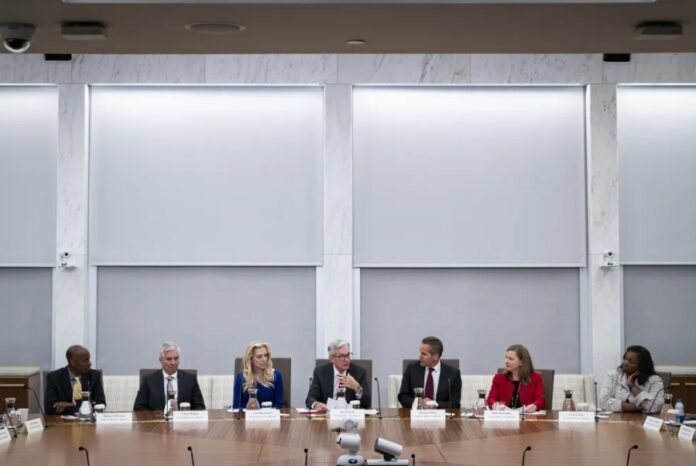As 2025 unfolds, the U.S. economy presents a complex tapestry of indicators, leaving both market participants and economists pondering the Federal Reserve’s next moves on interest rates. Futures traders anticipate multiple rate cuts this year, yet some economists suggest the Fed might need to consider rate hikes instead. This divergence stems from a blend of domestic economic performance and evolving international trade dynamics.
Current Economic Landscape
Recent data offers a mixed economic picture:
- Inflation Trends: March 2025 saw the Consumer Price Index (CPI) dip by 0.1%, the first decline since 2020. This reduction was primarily driven by a 6.3% drop in gasoline prices and a 0.7% fall in used vehicle costs. However, increases in food, medical care, clothing, and new vehicle prices suggest underlying inflationary pressures persist.
- Labor Market Dynamics: The labor market remains robust, with consistent job growth aligning with population increases. Indicators such as voluntary quits and job openings, while slightly reduced, continue to signal a tight labor market.
Trade Policies and Inflationary Concerns
The Trump administration’s recent trade policies introduce additional complexity:
- Tariff Implications: The imposition of significant tariffs on China, steel, and aluminum imports aims to address trade imbalances but carries the risk of elevating import prices and production costs. Analysts warn that these tariffs could reignite inflation, potentially complicating the Fed’s monetary policy decisions.
Federal Reserve’s Strategic Considerations
Given this intricate economic backdrop, the Federal Reserve faces critical decisions:
- Rate Cut Projections: Futures markets project multiple interest rate cuts throughout 2025. However, some forecasts have been adjusted downward; for instance, Goldman Sachs now anticipates two rate cuts, reduced from three.
- Inflation Vigilance: Despite recent inflationary relief, the Fed remains cautious. Chair Jerome Powell emphasized the need to balance the risks of moving too slowly, which could undermine labor market strength, against moving too quickly, potentially hindering progress on inflation.
Divergent Economic Opinions
The contrasting views on interest rate direction highlight the challenges in forecasting:
- Advocacy for Rate Hikes: Some economists argue that the Fed should prepare to raise rates, citing persistent inflation and potential overheating in certain economic sectors. They caution that premature rate cuts could lead to renewed inflationary pressures.
- Support for Rate Cuts: Conversely, others believe that rate cuts are warranted to sustain economic growth and address potential deflationary risks. They point to slowing inflation and a cooling labor market as justifications for monetary easing.
Conclusion
The Federal Reserve’s path in 2025 is fraught with complexities, balancing the need to support economic growth while keeping inflation in check. As global trade tensions evolve and domestic indicators fluctuate, the Fed’s decisions will require careful consideration of both current data and future projections. Stakeholders across the economy will be closely monitoring these developments, as the outcomes will have wide-reaching implications for markets, employment, and consumer prices.




